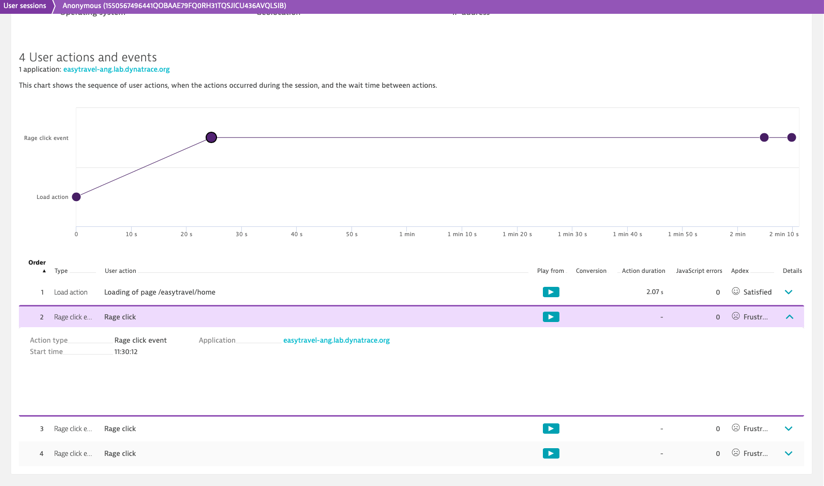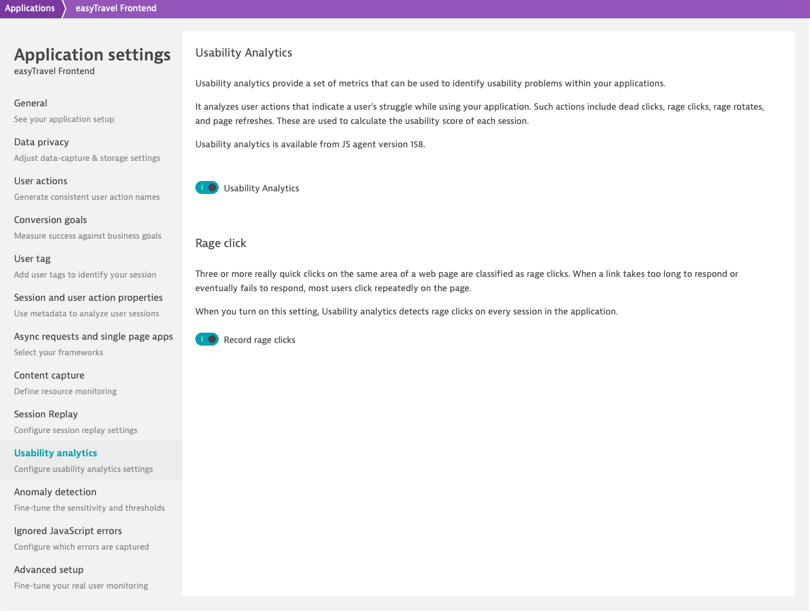When a web application or mobile app process doesn’t respond quickly, users may repeatedly click the affected UI control in helpless frustration. Such behavior is detected by Dynatrace as a rage click.
Applications often deliver frustrating user experiences that result from bad performance, poor operational health, or unexpected errors. In some instances, however, bad user experience stems from usability issues in product design or development. Examples of such issues include buttons that don’t work as expected, visuals that look like buttons but are indeed only labels, and so on. Problems like these are challenging to detect.
Dynatrace has long empowered you with the capability to detect problems in performance and availability, as well as application errors, with full-stack insights and root-cause analysis. However, even when equipped with such powerful analysis, businesses are typically unable to detect user frustration and poor usability. This leads to well-performing, error-free applications that still need to deliver satisfactory user experience or meet conversion goals. Error resolution and performance analysis are absolute must-haves for delivering smooth, seamless end-user experiences, but once these goals are met, you must shift your development focus to usability-related problems.
Confusion and frustration expressed by users can be detected based on user behavior. To detect such usability-based problems and to support you in improving your application performance, we’re releasing a series of user experience features that detect certain types of user confusion and frustration. Rage-click detection, as a measure of user frustration, is one such feature.
What are rage clicks?
When a web application or mobile app process doesn’t respond quickly, users may repeatedly click the affected UI control in helpless frustration. Such behavior is called rage clicks. Rage clicks indicate a negative user experience and frustration. Understanding and addressing the underlying causes of rage clicks can help improve user experience and optimize the design and performance.
Rage click detection is a powerful tool in Dynatrace that indicates the exact moments of user frustration. When used in combination with Session Replay, rage click detection can reveal the exact cause that leads to such repeated clicking. For instance, if a problem is caused by incorrect data returned by the server, Dynatrace full stack insights can be used to follow the problem through the entire stack down to the single line of code or database statement. This combination of AI-backed service insight and behavior-based properties is unique to Dynatrace.

Rage clicks are displayed in the user session details event list and can be filtered. The Play button re-plays the session that contains the rage clicks, thereby providing immediate usability insights.

Our early-access customers have already been able to detect problems in responsive implementations and browser-specific JavaScript errors based on rage-click analysis.
Rage clicks can also be accessed via user session queries through the API as well as the web user interface.

Want to try it out?
Usability analytics with rage clicks are now publicly available. These analytics capabilities can be used with or without enabling Session Replay. To enable these features, from within application-specific settings, enable the Usability Analytics and Rage click detection options.

Next steps
In upcoming releases, Dynatrace will continue to extend it’s Real User Monitoring offering with additional user behavior-based properties. So, stay tuned for details!





Looking for answers?
Start a new discussion or ask for help in our Q&A forum.
Go to forum